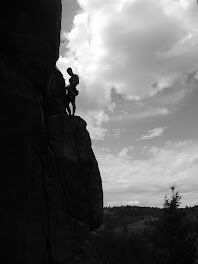As a sometimes researcher and “studier” of people I have to give a name to the study of photographs that I am proposing, in essense this is a cultural study. This means, according to Wikipedia;
Cultural studies is an academic field grounded in critical theory and literary criticism. It generally concerns the political nature of contemporary culture, as well as its historical foundations, conflicts, and defining traits. It is, to this extent, largely distinguished from cultural anthropology and ethnic studies in both objective and methodology. Researchers concentrate on how a particular medium or message relates to matters of ideology, social class, nationality, ethnicity, sexuality, and/or gender.[1]
Cultural studies approaches subjects holistically, combining feminist theory, social theory, political theory, history, philosophy, literary theory, media theory, film/video studies, communication studies, political economy, translation studies, museum studies and art history/criticism to study cultural phenomena in various societies. Thus, cultural studies seeks to understand the ways in which meaning is generated, disseminated, and produced through various practices, beliefs, institutions, and political, economic, or social structures within a given culture
Furthermore the study of the photographs that I possess is actually defined as:
Visual anthropology is a subfield of
cultural anthropology that is concerned, in part, with the study and production of
ethnographic photography, film and, since the mid-1990s,
new media. While the term is sometimes used interchangeably with
ethnographic film, visual anthropology also encompasses the anthropological study of visual representation, including areas such as performance, museums, art, and the production and
reception of
mass media. Visual representations from all cultures, such as sandpaintings, tattoos, sculptures and reliefs, cave paintings, scrimshaw, jewelry, hieroglyphics, paintings and photographs are included in the focus of visual anthropology. Human vision, its physiology, the properties of various media, the relationship of form to function, the evolution of visual representations within a culture are all within the province of visual anthropology. Since anthropology is a
holistic science, the ways in which visual representation are connected to the rest of culture and society are central topics.
[citation needed]
To further summarize Banks and Morphy state that visual anthropology state that the focus is on recording visual or visible phenomena and obtaining visual data. They caution that this broad term may be ambiguous and too broad. The further go on to state that visual anthropology services that much can be learned from a culture through photography. Morphy and Banks provide a cautionary note in that we should not over look photography by not considering this medium in it’s totality as a contribution to the study of cultures and that researchers must understand the medium within the context of data itself. (1999, Rethinking visual anthropology. Yale University Press. Banks, Marcus and Morphy, Howard)
Visual anthropology may give some sort of framework to what I am trying to address and it does seem to recognize photos as data, which ultimately I am trying to state..that photos and vintage photos are data to be studied as sources for determining cultural traditions, life, and activities of people. Sandra S. Lee, Ph. D. conducted an “ethnographic study of old Italian neighborhoods from the 1880's to the 1950's, she interviewed and collected vintage photographs from individuals and families.” Unfortunately I have the photographs but not he people to interview for a similar ethnographic study. In order to conduct a study of the photos I must have knowledge of the history of the time period when the photos were taken, a knowledge to be able to judge the time period of the photos, if not dated, and the ability to analyze the photos to extract the period in which they were taken.
I can also solicit comments from people on the web to engage in a discussion or dialogue regarding the photos that I post. To gain their analysis, knowledge and expertise on providing an analysis of the photos that I post. I propose to present different photographs to study in the areas of dress, hair styles, jewelry, expression, architecture, cars, and machinery. As this study evolves there will be different details to study, I will present photos that I feel are most illustrative of the topic. Please join me on this study! Your in put will be valuable. I will continue to define the context of this study as I learn more about the research methodologies.
My photos for your consideration today are below and are differing styles of architecture:

From Russia photos:




Our churches, our towns and how we have lived:

This actually is a picture of Boy's Town/home?

You will note that these are buildings being moved:

To contrast a city scape (circa 1950 or 60’s):

An auditorium or arena..I am sure state of the art for it’s time. Sorry about the dirty photos these are actually slides that are speckled with dust and dirt. Normally I clean them using Photoshop, depending on the nature of the photo and how I am going to use it:

Another city skyline..very dirty:

Another city view:

I welcome comments, thoughts and ideas! As always more to come!



















































